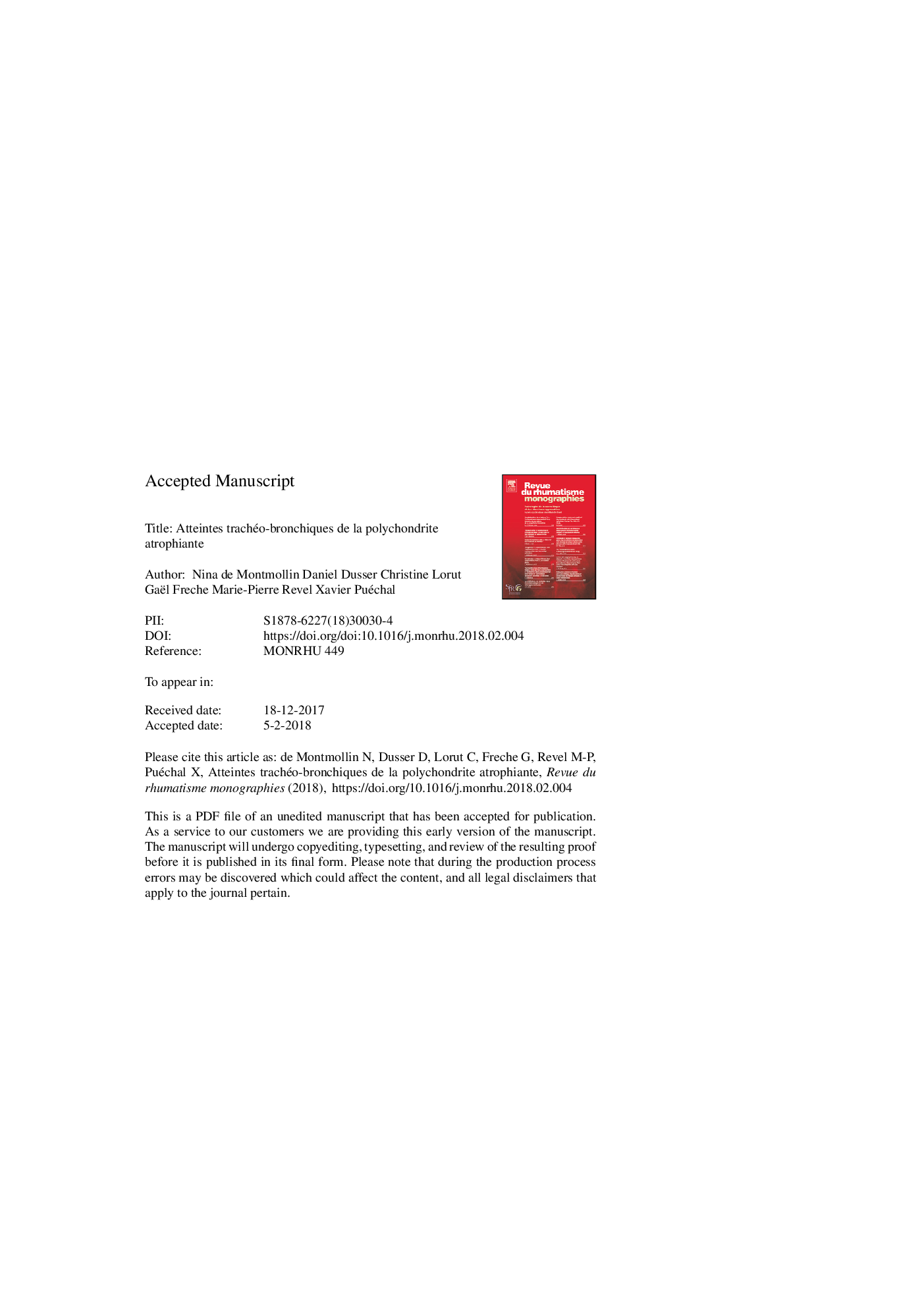| Article ID | Journal | Published Year | Pages | File Type |
|---|---|---|---|---|
| 8743515 | Revue du Rhumatisme Monographies | 2018 | 25 Pages |
Abstract
Tracheobronchial involvement affects 20 to 50% of patients with relapsing polychondritis and may reveal the disease. It should be looked for at the time of diagnosis and at each follow-up visit. The search for respiratory impairment must include a chest scan with dynamic expiratory computed tomography and pulmonary function tests. Those investigations should be routinely performed, even in asymptomatic patients, at the time of diagnosis, and repeated regularly during follow-up. The indication for bronchoscopy should be very cautious and it should be performed only by expert endoscopists in symptomatic patients. The indication of an endoscopic gesture, which may lead to perforation of the tracheobronchial mucosa, must be discussed by an expert endoscopist, after multidisciplinary evaluation. Early detection and management of tracheobronchial involvement in relapsing polychondritis has improved significantly its prognosis, especially since the development of interventional fiberoptic bronchoscopy.
Keywords
Related Topics
Health Sciences
Medicine and Dentistry
Immunology, Allergology and Rheumatology
Authors
Nina de Montmollin, Daniel Dusser, Christine Lorut, Gaël Freche, Marie-Pierre Revel, Xavier Puéchal,
